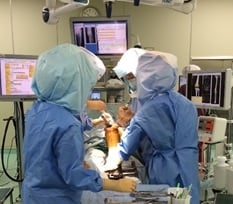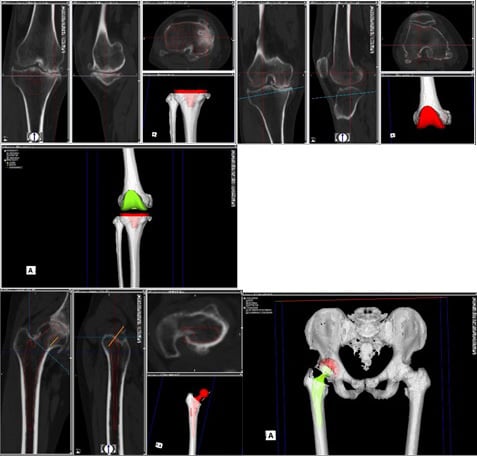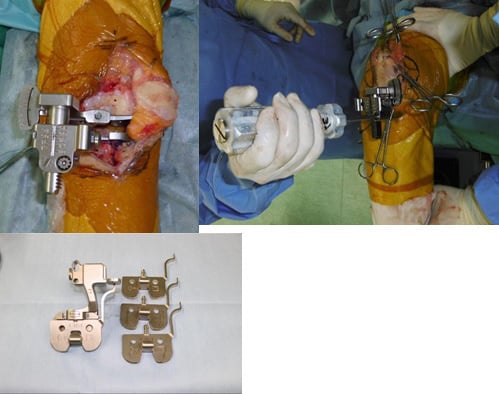The Ogori Daiichi General Hospital Joint Replacement Center was opened in 2010 in view of the expanding volume of arthroplasty cases, and serves as a one stop holistic center for peri-operative assessment and care, surgery and rehabilitation. It has earned its reputation as a referral center for the Yamaguchi prefecture as well as the neighboring prefectures for complicated arthroplasty cases. Annually we perform more than 1200 orthopedic cases, of which over 200 cases are joint arthroplasties. The cases include arthroplasties for primary and secondary degenerative osteoarthritis, inflammatory arthritis and revision arthroplasties of the knee, hip and shoulder. The hospital is equipped with modern, state-of-the-art operating theatres, facilities and resources. We offer comprehensive dedicated rehabilitation programs postoperatively for the patients within our hospital.

Main surgeries are as below.
- Primary and revision hip arthroplasty
- Primary and revision knee arthroplasty
- Primary shoulder arthroplasty including Reverse TSA
- Arthroscopic ACL reconstruction
- Arthroscopic meniscus repair
- Arthroscopic rotator cuff repair
- Arthroscopic Bankart repair for recurrent shoulder dislocations
- Trauma cases of the extremities
Clinical Training
One of the goals of the Program is to expose and train Fellows in a wide range of treatment methods, from complex revisions to minimally invasive procedures. Furthermore, Fellows can acquire knowledge of detailed preoperative planning and postoperative assessment. Some of the characteristics of our center are indicated below.
1)Preoperative planning for knee and hip arthroplasty
Comprehensive preparation of each patient undergoing TKA or THA is essential to achieve a stable and durable prosthetic joint. Our routine preparation comprises of
①Careful history taking and physical examination
②Imaging studies: Important anatomical markers and individual characteristics are checked by standard imaging studies with X-ray, CT-scan and MRI if necessary.
③Three-dimensional templating: Three-dimensional templating software
(Zed-hip, Zed-knee;Lexi, Tokyo) are routinely used for the selection of the appropriate implants and prediction of the size and position of the implant.
1)Preoperative planning for knee and hip arthroplasty
Comprehensive preparation of each patient undergoing TKA or THA is essential to achieve a stable and durable prosthetic joint. Our routine preparation comprises of
①Careful history taking and physical examination
②Imaging studies: Important anatomical markers and individual characteristics are checked by standard imaging studies with X-ray, CT-scan and MRI if necessary.
③Three-dimensional templating: Three-dimensional templating software
(Zed-hip, Zed-knee;Lexi, Tokyo) are routinely used for the selection of the appropriate implants and prediction of the size and position of the implant.

2)Gap-balancing technique for TKA
Creation of symmetrically balanced flexion and extension gaps is a surgical goal of a TKA. Precise soft tissue balancing combined with accurate bone resections determine rotation of the femoral component. Improper femoral component rotation results in patellofemoral instability, anterior knee pain, arthrofibrosis, and flexion gap instability. To achieve a well-balanced TKA, we have employed the modified gap-balancing technique since 2006. For quantitative assessment of joint gaps, the tensor system has been used in the modified gap-balancing technique.
Creation of symmetrically balanced flexion and extension gaps is a surgical goal of a TKA. Precise soft tissue balancing combined with accurate bone resections determine rotation of the femoral component. Improper femoral component rotation results in patellofemoral instability, anterior knee pain, arthrofibrosis, and flexion gap instability. To achieve a well-balanced TKA, we have employed the modified gap-balancing technique since 2006. For quantitative assessment of joint gaps, the tensor system has been used in the modified gap-balancing technique.

3)Standard and Alternative Approaches for THA
Posterior and direct anterior approaches are usually used for primary THA. We determine the approach by careful assessment of individual cases. For revision THA, the posterior approach is usually employed.
Posterior and direct anterior approaches are usually used for primary THA. We determine the approach by careful assessment of individual cases. For revision THA, the posterior approach is usually employed.

